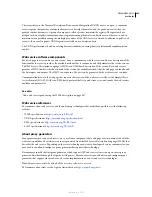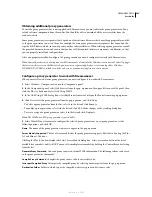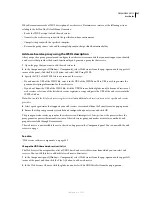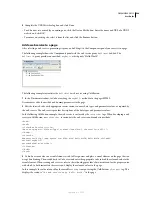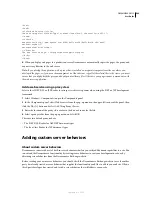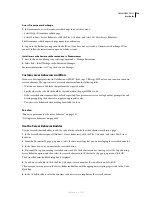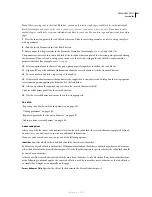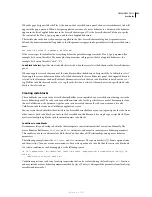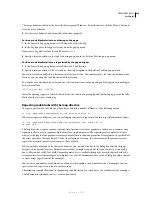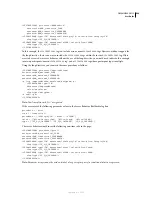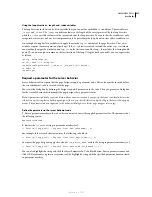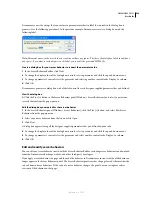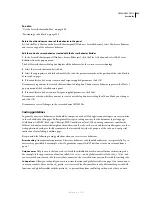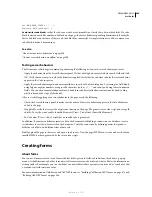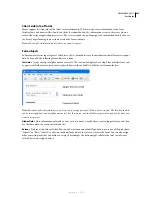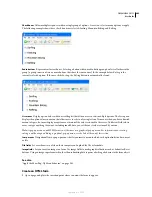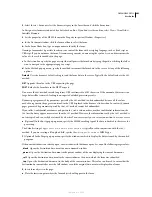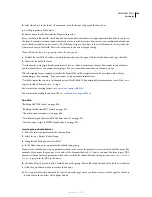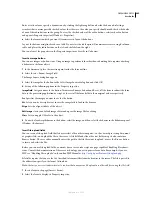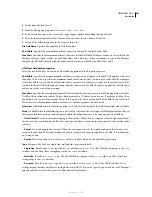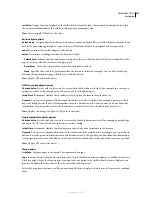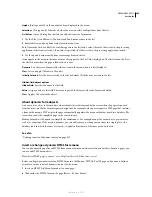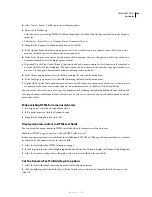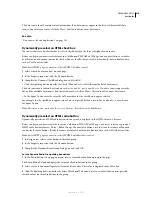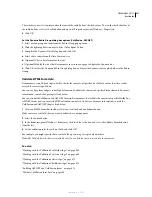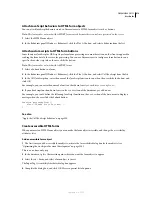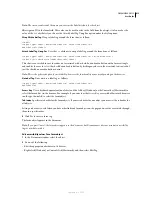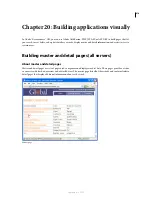
DREAMWEAVER CS3
User Guide
599
See also
“Use the Server Behavior Builder” on page 590
“Positioning a code block” on page 593
Retain the old and new versions of the behavior in the panel
❖
Click the Plus (+) button on the Server Behaviors panel (Window > Server Behaviors), select New Server Behavior,
and create a copy of the old server behavior.
Edit the code of a server behavior created with the Server Behavior Builder
1
In the Server Behaviors panel (Window > Server Behaviors), click the Plus (+) button and select Edit Server
Behaviors from the pop-up menu.
The Edit Server Behaviors dialog box displays all the behaviors for the current server technology.
2
Select the server behavior and click Edit.
3
Select the appropriate code block and modify the code, the parameter marks, or the position of the code block to
be inserted in pages.
4
If the modified code does not contain any designer-supplied parameters, click OK.
Dreamweaver regenerates the server behavior without a dialog box. The new server behavior appears in the Plus (+)
pop-up menu of the Server Behaviors panel.
5
If the modified code does contain designer-supplied parameters, click Next.
Dreamweaver asks you whether you want to create a new dialog box, overwriting the old one. Make your changes
and click OK.
Dreamweaver saves all changes in the server behavior’s EDML file.
Coding guidelines
In general, your server behavior’s code should be compact and robust. Web application developers are very sensitive
to the code added to their pages. Follow generally accepted coding practices for the document type’s language
(ColdFusion, ASP.NET, JavaScript, VBScript, PHP, Visual Basic or Java). When writing comments, consider the
different technical audiences that might need to understand the code, such as web and interaction designers, or other
web application developers. Include comments that accurately describe the purpose of the code, and any special
instructions for including it within a page.
Keep in mind the following coding guidelines when you create server behaviors:
Error checking
An important requirement. The server behavior’s code should handle error cases gracefully. Try to
foresee every possibility. For example, what if a parameter request fails? What if no records are returned from a
query?
Unique names
Help to ensure that your code is clearly identifiable and avoids name collisions with existing code.
For example, if the page contains a function called
hideLayer()
and a global variable called
ERROR_STRING
, and
your server behavior inserts code that uses those names too, the server behavior may conflict with the existing code.
Code prefixes
Allow you to identify your own run-time functions and global variables in a page. One convention is
to use your initials. Never use the
MM_
prefix, as it is reserved for Macromedia use only. Macromedia preceded all
functions and global variables with the prefix
MM_
to prevent them from conflicting with any code that you write.
September 4, 2007

